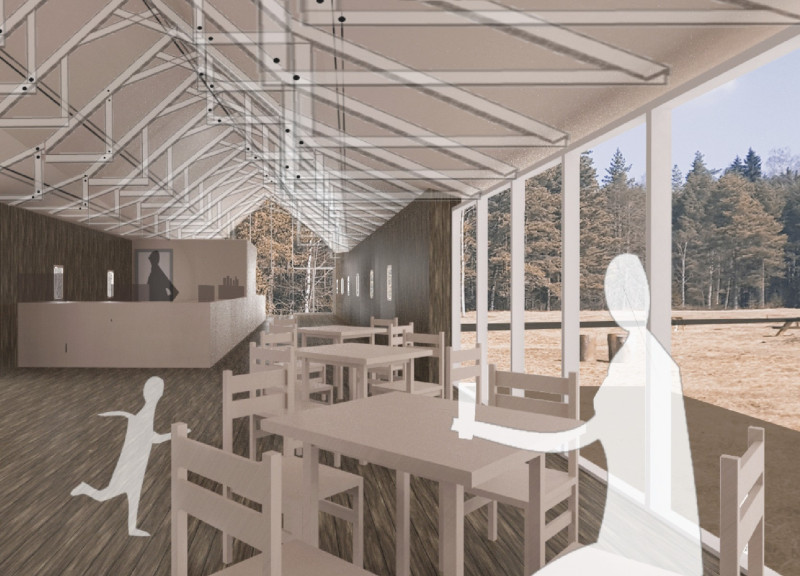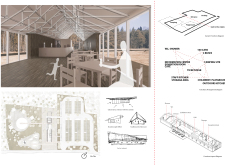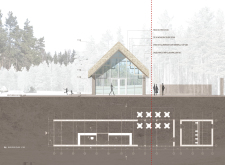5 key facts about this project
The architectural layout is carefully organized to guide visitors from parking to various functional spaces, including an information center, café, exhibition room, staff facilities, and a children's playground. The design is characterized by open spaces that facilitate movement and engagement, fostering a sense of community among visitors.
Materiality plays a significant role in the project. The use of redlita thatch for roofing aligns with regional architectural traditions while ensuring environmental compatibility. Pine wood strip cladding adds warmth and texture to the façade, reinforcing the connection with the surrounding forest. The integration of plywood boards and mineral wool insulation enhances structural efficiency, while aluminum curtain wall systems allow natural light to permeate interior spaces, blurring the lines between indoors and outdoors.
Unique Design Approach: Contextual Integration
A distinctive aspect of the Kemeri Portal is its contextual integration. The architects have crafted a structure that draws inspiration from traditional Latvian architecture, echoing local building styles while incorporating modern techniques. This blend is not merely aesthetic; it serves to embed the structure within its environment, promoting a sense of place that resonates with visitors.
The project's design also emphasizes sustainability. The choice of materials reflects a commitment to environmental stewardship. Natural and locally sourced materials contribute to lower carbon footprints and enhance the building’s thermal performance. This approach aligns with the broader mission of fostering appreciation and respect for the ecological elements of the park.
User-Centric Design: Enhancing Visitor Interaction
The interior spaces are designed to prioritize user experience. High ceilings with wooden trusses create a sense of openness, while extensive glazing invites natural light and promotes visual connections with the landscape. Each area is purposefully organized to enhance visitor engagement, such as the educational exhibition rooms that inform about the park’s ecosystem and local biodiversity.
In summary, the Kemeri Portal showcases a thoughtful integration of architecture and nature. The facility not only serves functional needs but also enriches the visitor experience through its design and material choice. To explore more about this project, including its architectural plans, sections, and design nuances, consider delving deeper into the presentation for a comprehensive understanding of its significance and functionality.


























